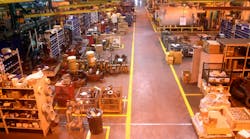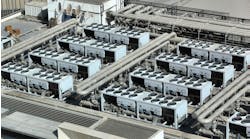Facility Warriors: Unsung Heroes in Manufacturing’s Daily Battle for Efficiency and Continuity
Manufacturers are embracing digitalization with renewed urgency, according to The Global Smart Industry Readiness Index Initiative: Manufacturing Transformation Insights Report 2022.
The report said that manufacturers are actively restructuring their production systems to pivot or expand business offerings, reviewing their manufacturing footprints, and recognizing supply chain networks to address logistical challenges and business uncertainties. Additionally, more and more decision-makers increasingly expect key business commitments, plans, and interventions to be supported through data.
Consultant Steven Moskowitz from Industry4 Ward LLC has pointed to global manufacturers like Corning and 3M who are leading the digital transformation charge. Moskowitz believes it’s only a matter of time before manufacturers apply digital transformation beyond the factory floor and into the hands of facilities teams responsible for maintaining both facility and manufacturing equipment—like conveyors used on assembly lines along with HVAC systems, waste management and warehousing solutions.
“There’s lots of opportunity to apply digital transformation strategies and tactics to facilities teams—particularly in high complexity industries, such as the semiconductor segment, the chemical industry, the food and beverage industry and the pharmaceutical industry,” said Moskowitz.
Facilities teams play a crucial role in maintaining the smooth operation of manufacturing plants. Knowing equipment details for preventative maintenance and minimizing downtime is a decisive element of effective plant facility management—whether these teams are internal or outsourced for a particular area of expertise. In either case, continuity of communications and information sharing between insiders and outsiders is critical.
“Ironically, the least talked about positions in manufacturing are facility positions,” said Jim Mayer, founder of TCO Strategies and host of the Manufacturing Culture podcast.
“That’s a shame because manufacturing facility management is no easy task. You’ve got to be aware of so many types of situations, types of equipment, and constantly be thinking about what would happen if the plant had to shut down because of a power outage, flood or extreme weather conditions,” added Mayer.
Manufacturing facility management teams use various technologies to track energy usage, equipment maintenance, documentation and on-site troubleshooting, including building automation systems, energy management software and mobile apps for documentation and reporting. Mobile apps enable facility teams to document maintenance activities, inspections, and equipment readings on the go. This helps in real-time data collection, reducing paperwork and improving the accuracy of documentation.
If it’s too hot or cold in a food manufacturing plant, ultimately, it’s the facility team’s responsibility to adjust. If a power outage puts a plant in total darkness and the machines stop running, then facilities teams must be on-site day or night to get life back on track.
As streamlining productivity and ensuring business continuity are critical to effective manufacturing facility management, here are four ways facilities teams actively participate in this process.
1) Equipment Maintenance and Reliability
Regular maintenance of machinery and equipment is essential to prevent breakdowns and ensure optimal performance. Facilities teams should schedule preventive maintenance, conduct inspections, and promptly address any issues to minimize downtime. Additionally, downtime for preventive maintenance is typically less than for reactive maintenance as parts and staff can be assembled beforehand.
2) Optimizing Space and Layout
Efficient use of space can significantly impact productivity. Facilities teams can analyze the plant layout, reorganize workspaces, and optimize material flow to reduce bottlenecks and streamline processes. This may involve implementing Lean manufacturing principles or utilizing space-saving technologies.
3) Safety and Compliance
Ensuring a safe working environment is paramount. Facilities teams need to uphold safety standards, conduct regular safety inspections, provide necessary training and ensure compliance with regulations. Plants can be hazardous depending on their design, presence of chemicals, indoor air quality, potential for trips and falls, traffic flow of people and vehicles, noise and poor lighting.
4) Energy Efficiency and Sustainability
Implementing energy-efficient practices and sustainability initiatives reduces operational costs and contributes to environmental responsibility. Facilities teams can introduce energy-saving technologies, monitor energy consumption and explore renewable energy sources to improve efficiency and reduce waste.
Tapping Into the Flow of Information
Some of the biggest manufacturing plants are spread out over acres and acres, so facilities teams are in constant motion handling minor requests, completing work orders and responding to emergencies. If a gas, water or electrical shut-off can’t be found quickly, then production is threatened. Locating an operating manual for a boiler, condenser or generator isn’t always easy. Sometimes O&Ms reside with equipment, or they’re filed away somewhere.
All these tasks can be coordinated and implemented quickly and efficiently by facilities teams using mobile devices. Using mobile apps, mobile devices and Wi-Fi technologies can dramatically boost productivity for facilities teams.


